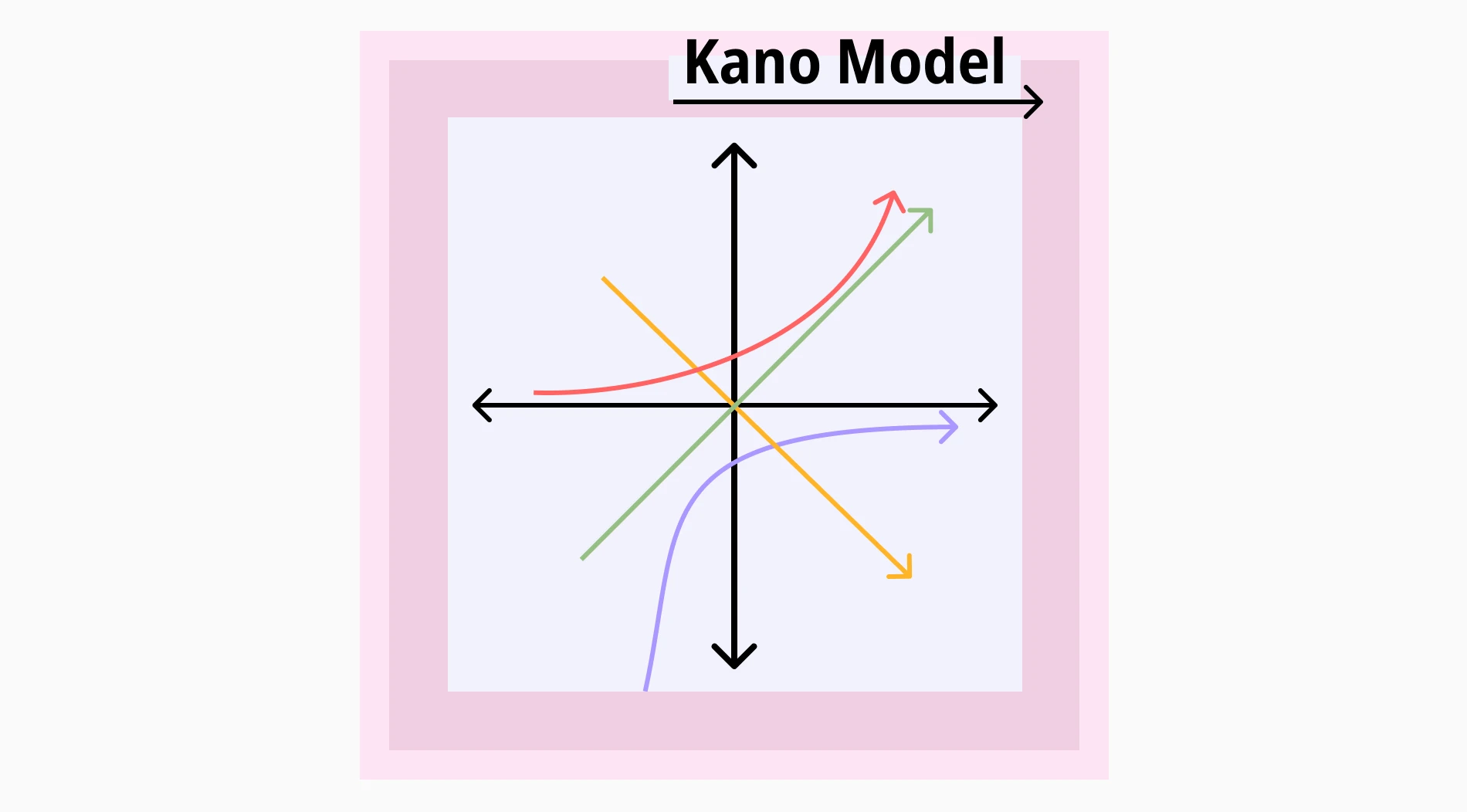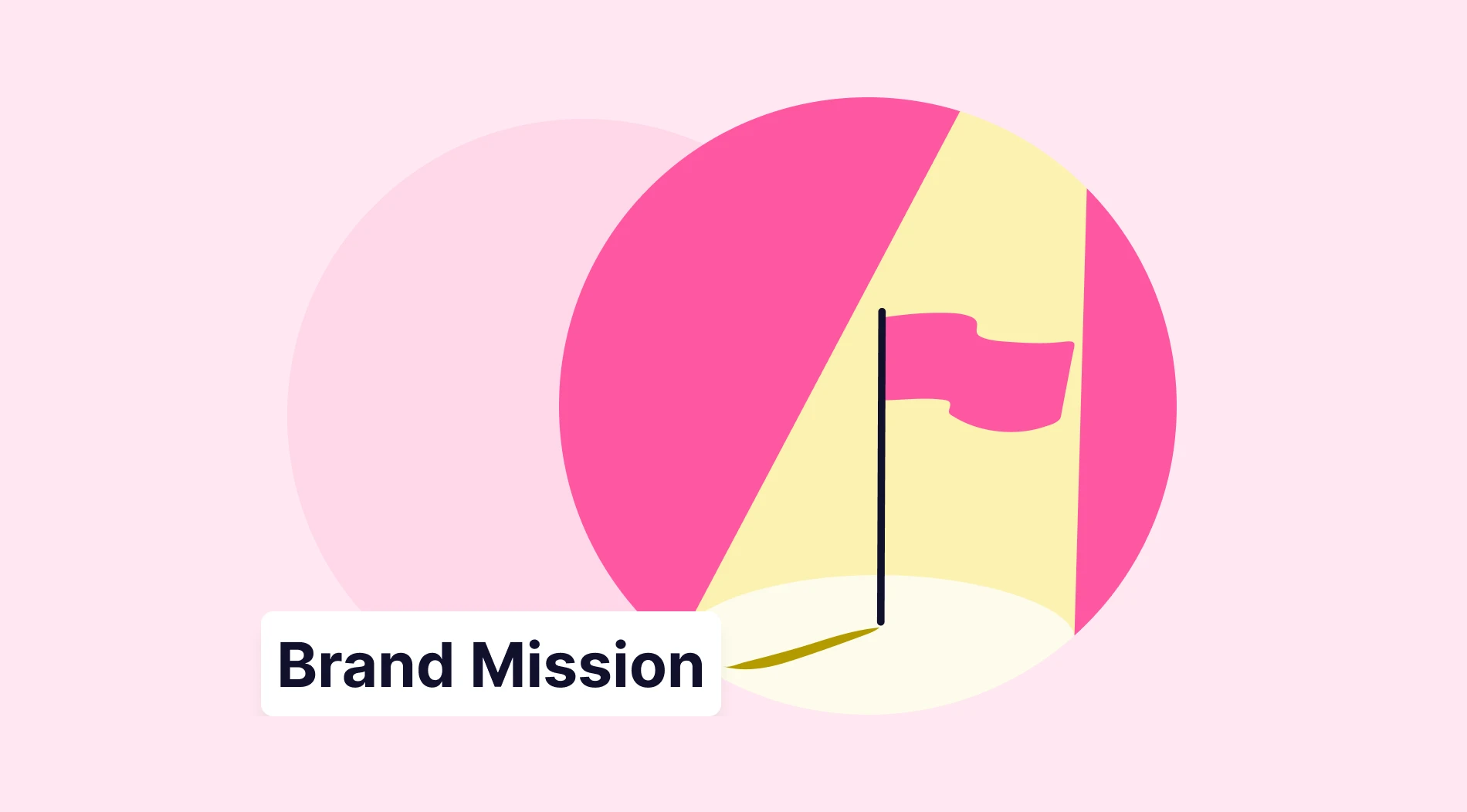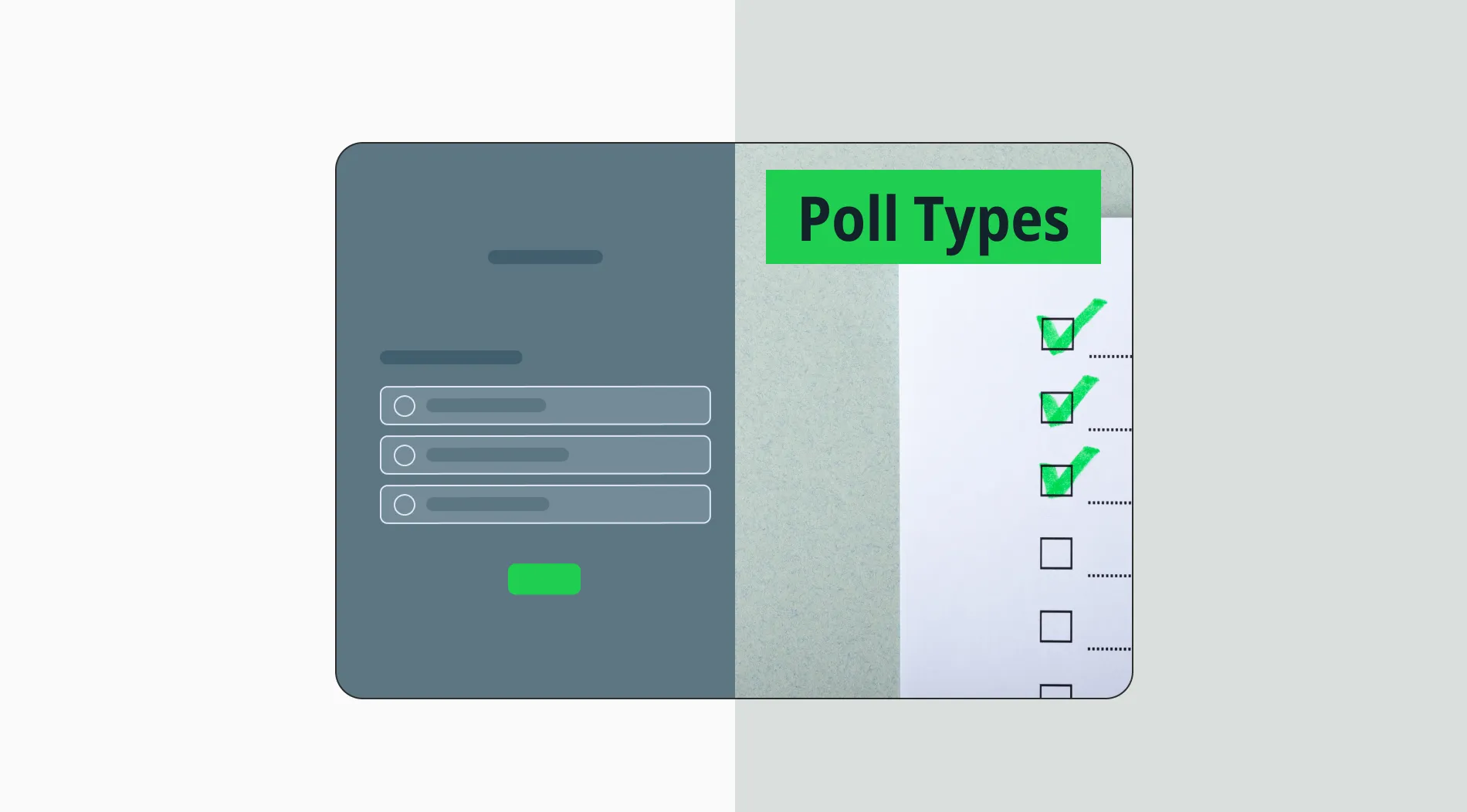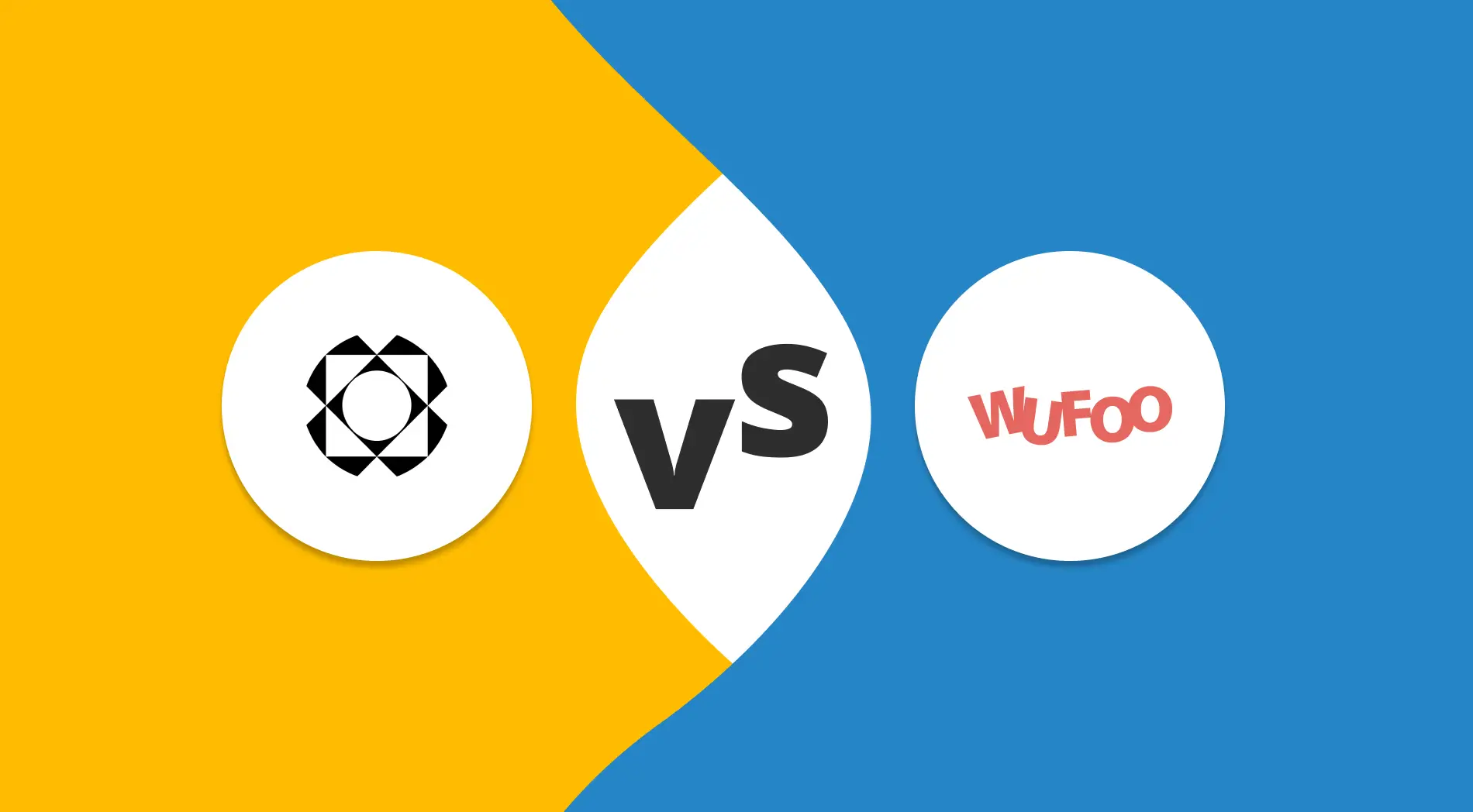In the ever-changing world of modern business, staying ahead of competitors is always important. There are significant tools that companies can use to meet their customers’ demands more effectively. Your business should be no exception! Using these models, you can make informed decisions that drive growth and success in your business. If you can embrace these models, you’ll have an enormous advantage.
Today, in this article, we will explore one of these models: the Kano Model. It is a valuable tool for your business, aiming to improve customer satisfaction. You will see the definition, background, and components. Moreover, we will discuss why the Kano model is important and where you can benefit from it in your business. We will also discuss the pros and cons and frequently asked questions about the subject. Let’s dive in!
Let’s start with the definition: What is the Kano model?
The Kano Model of Customer Satisfaction is a framework developed by Professor Noriaki Kano in the 1980s. It helps businesses understand customer satisfaction.
It categorizes preferences into five distinct groups: basic needs, performance needs, excitement needs, indifferent needs, and reverse needs. This model allows your company to set priorities in delivering value for your products/services.
The Kano model also provides a structured approach to help your company allocate sources more effectively. At its core, it divides customer preferences into categories above. Basic needs are the essential features customers expect, while performance needs directly correlate with customer satisfaction.
Excitement needs are unexpected features that enhance customer satisfaction, while indifferent needs do not significantly impact customer satisfaction. Reverse needs can cause dissatisfaction. This model will guide prioritizing the attractive features that will exceed your customers’ expectations. You will foster loyalty and long-term satisfaction.
Background of the Kano model
Professor Dr. Noriaki Kano first introduced the Kano Model in the 1980s. Hence the name Kano model. This was when businesses sought more sophisticated ways to understand customer satisfaction. Professor Kano, a Japanese academic at the Tokyo University of Science and a business consultant, developed this model to help companies navigate various customer needs.
His research focused more on the relationship between product quality and customer satisfaction. It helps businesses around the world to help create policies enhancing customer satisfaction. Professor Kano’s model was groundbreaking because it recognized that not all product features are equally important to customers. Some are essential, while others do not increase satisfaction beyond a certain point.
The Kano model: Explained
Now, let’s dive into the “Kano Model”. We will provide a detailed list and description of the model’s components. Understanding these “needs” will significantly help your business understand what your customers want. We recommend you learn the nuances of each need to comprehend their actions and how customers react to them.
1- Basic needs
Our first component is “basic needs”. They are also known as the must-be qualities/basic features. They are essential features that your customers will expect in your products/services. Their presence does not increase satisfaction, but their absence will lead to significant dissatisfaction. For example, battery life and sound quality are basic needs for smartphones.
You take these features for granted, so you are not impressed that it has these qualities. But do not make the mistake of thinking they are not essential. Just like this, your business should ensure that all basic needs are met in your product/services before focusing on enhancing other aspects. Failing these may result in negative customer experiences and a loss of loyalty.
2- Performance needs
Our second element is the performance needs/performance attributes. They are one-dimensional qualities. They directly increase the customer satisfaction. You will have more satisfied and loyal customers if you meet these needs better. These needs are measurable and apparent, such as speed. For example, fuel efficiency is a performance need in a car.
It will make you prefer that car over the others. Your business should focus on optimizing performance needs to gain a competitive advantage. Balancing performance with cost-effectiveness is essential to draw more customers and maintain profits in your sales.
3- Excitement needs
Our third need is the “excitement needs.” You can also call them the “delight features”. They are not explicit, but they have the potential to create a strong emotional response when they are present. For example, think of a hotel providing chocolates with an innovative design to delight their customers.
When customers show up, they will not expect a chocolate, but if offered, they will have positive thoughts about the place. Fulfilling these excitement needs will also turn your customers into loyal advocates. However, watch out. These must be delivered carefully, as your customers can also take them for granted.
4- Indifferent needs
Our fourth type of need, the indifferent needs, are features that will neither increase nor decrease your customer’s satisfaction. Customers will not have a strong preference for those needs. For example, the color of the internal components in a laptop is an indifferent feature. A person who will buy a laptop will not look at them.
Therefore, your business should avoid investing significant resources in this indifferent need. They simply do not contribute to customer satisfaction. Focusing on essential and performance needs instead will be a more effective strategy for your business. Nonetheless, understanding indifferent needs helps in your resource allocation while providing your products/services.
5- Reverse needs
Our last set of needs are the reverse needs. These needs can cause dissatisfaction if they are present and are the opposite of performance and excitement needs. For example, if you produce a device with too advanced technical features, this will push away the customers looking for a basic product model.
You should carefully set your priorities and recognize your target audience to avoid these kinds of problems. Avoiding features that alienate or frustrate your customers will help you a great deal to build a loyal and sustainable customer portfolio. Understanding reverse needs also helps you tailor your products/services to meet the specific preferences of different customer groups, ensuring a positive experience.
How to use the Kano model
Now that we know each component of Professor Kano’s model, let’s delve into how you can effectively use those “needs.” We propose four effective steps to take to prioritize your customer preferences and address them in a way that benefits your business:
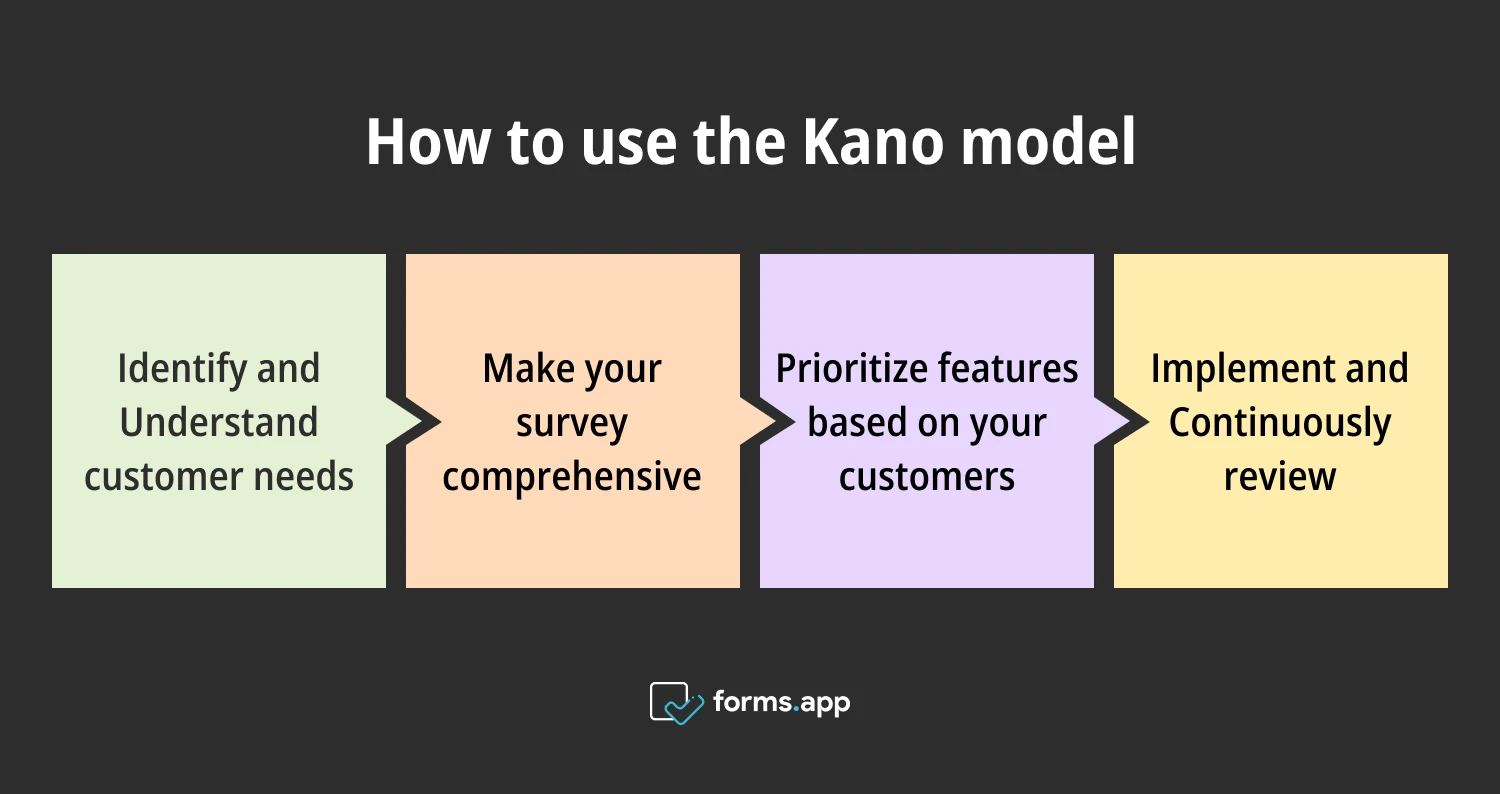
Steps to use the Kano model
1- Identify and Understand customer needs:
To use the Kano model effectively, identify and understand your customer’s needs. You can do that by conducting market research or gathering customer feedback through surveys, etc. This step helps distinguish between basic, performance, and excitement needs. Understanding what your customer wants allows you to provide your services accordingly.
By addressing their fundamental needs and incorporating features that delight your customers, you will see that you can build stronger customer relationships and foster loyalty. You will take the first step in meeting their expectations and enhancing their satisfaction.
2- Make your survey comprehensive
Ensure you design a comprehensive survey to gather insights into how your customers perceive your product/service features. Include functional and dysfunctional questions for each feature to capture customer reactions to their presence and absence. The survey should be clear and concise to ensure accurate responses.
Analyzing this data will help you categorize features into Kano’s five need types: basic, performance, excitement, indifferent, and reverse needs. A comprehensive and well-designed survey is a crucial step for obtaining reliable data. This data will help you make informed decisions and prioritize features that significantly impact your customers’ satisfaction.
3- Prioritize features based on your customers
Once you have categorized the features using the Kano Model, prioritize them based on their impact on customer satisfaction. Focus on ensuring that all basic needs are met. Remember, their absence can lead to dissatisfaction. Next, optimizing performance needs to improve overall satisfaction.
Lastly, identify and incorporate excitement needs to create a delightful customer experience. This will help you allocate resources efficiently. It will also ensure that your development effort will enhance your customer values and maintain your competitive advantage.
4- Implement and Continuously review
Now that you know what to do, start taking action! Implement the prioritized features into your product/service development process. Continuously review and assess the effectiveness of these features by gathering ongoing customer feedback and monitoring market trends. Don’t forget that their expectations evolve.
Therefore, it is important to adapt and update your products/services accordingly by considering their evolving needs. The Kano Model is not a one-time exercise but a continuous effort to help maintain your relevance and competitiveness. Visit your Kano model template regularly to ensure your business stays aligned with customer needs and delivers exceptional value.
Examples of the Kano Model
Now, we will see some hypothetical Kano Model examples of businesses that will use it to understand their customers and enhance their products/services. These examples will help you see the model in practice and help you better understand how the Kano model works:
Example 1: Smartphone features
Let’s imagine a smartphone company using the Kano Model to prioritize features for a new model. Basic needs included reliable call quality and battery life. Performance needs to focus on camera quality and processing speed. Excitement needs were innovative features like facial recognition and wireless charging.
By understanding these categories, the company ensured the new model met essential requirements while offering unique features that delighted customers. This approach led to higher customer satisfaction and strong sales performance.
Example 2: Hotel
A hotel chain applied the Kano Model to improve guest experiences. Basic needs were clean rooms and comfortable beds. Performance needs included fast check-in and check-out processes and responsive customer service. Excitement needs were unexpected perks like complimentary spa access and personalized welcome notes.
The hotel chain enhanced guest satisfaction by categorizing and prioritizing these needs, leading to positive reviews and increased repeat bookings. The Kano Model helped identify key areas for improvement and innovation.
Example 3: Online retail platform
An online retail platform used the Kano Model to enhance its user interface. The basic needs were a secure payment system and accurate order tracking. Performance needs included fast loading times and an easy-to-navigate website. Excitement needs were features like personalized recommendations and interactive product previews.
By addressing these needs, the platform improved user satisfaction and engagement. The Kano Model guided the development team in focusing on the most important features, resulting in a better overall user experience and higher conversion rates.
When to use the Kano model
It is also essential to understand the suitable environments for using the Kano model, depending on your business type. Here are some instances of “when to use” the Kano model. Understanding these environments will give you a clearer understanding of which processes of your business should be tailored according to the Kano Model:
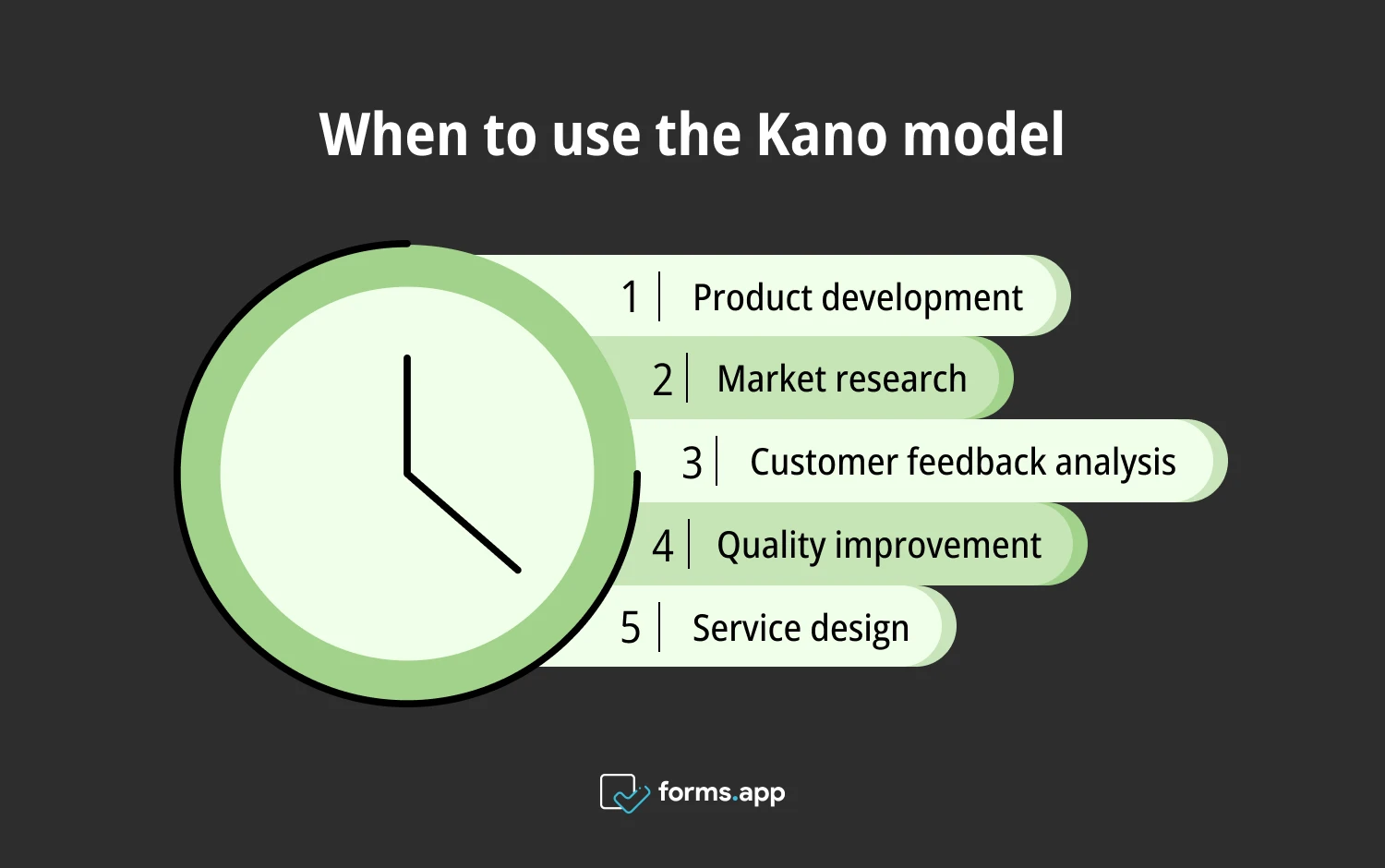
Right times to use the Kano model
➡️Product development: Product managers or product teams can use the Kano Model to prioritize features during the product development phase, including essential and delightful elements that meet and exceed customer expectations.
➡️Market research: Apply the Kano Model in market research to gain insights into customer preferences and identify features that will drive satisfaction and competitive differentiation.
➡️Customer feedback analysis: Analyze customer feedback using the Kano Model to categorize needs, prioritize improvements that enhance overall satisfaction, and address critical pain points.
➡️Quality improvement: Utilize the Kano Model to focus quality improvement efforts on features that significantly satisfy customers, ensuring better product and service offerings.
➡️Service design: Incorporate the Kano Model into service design to create experiences that meet basic expectations while providing unexpected value that delights customers and fosters loyalty.
Pros & Cons of the Kano model
So far, we have discussed when and how to use the Kano model and touched upon the benefits of it. However, this model has both advantages and disadvantages. Therefore, you should not depend solely on this model and should consider your position carefully without applying it. Let’s see some pros and cons:
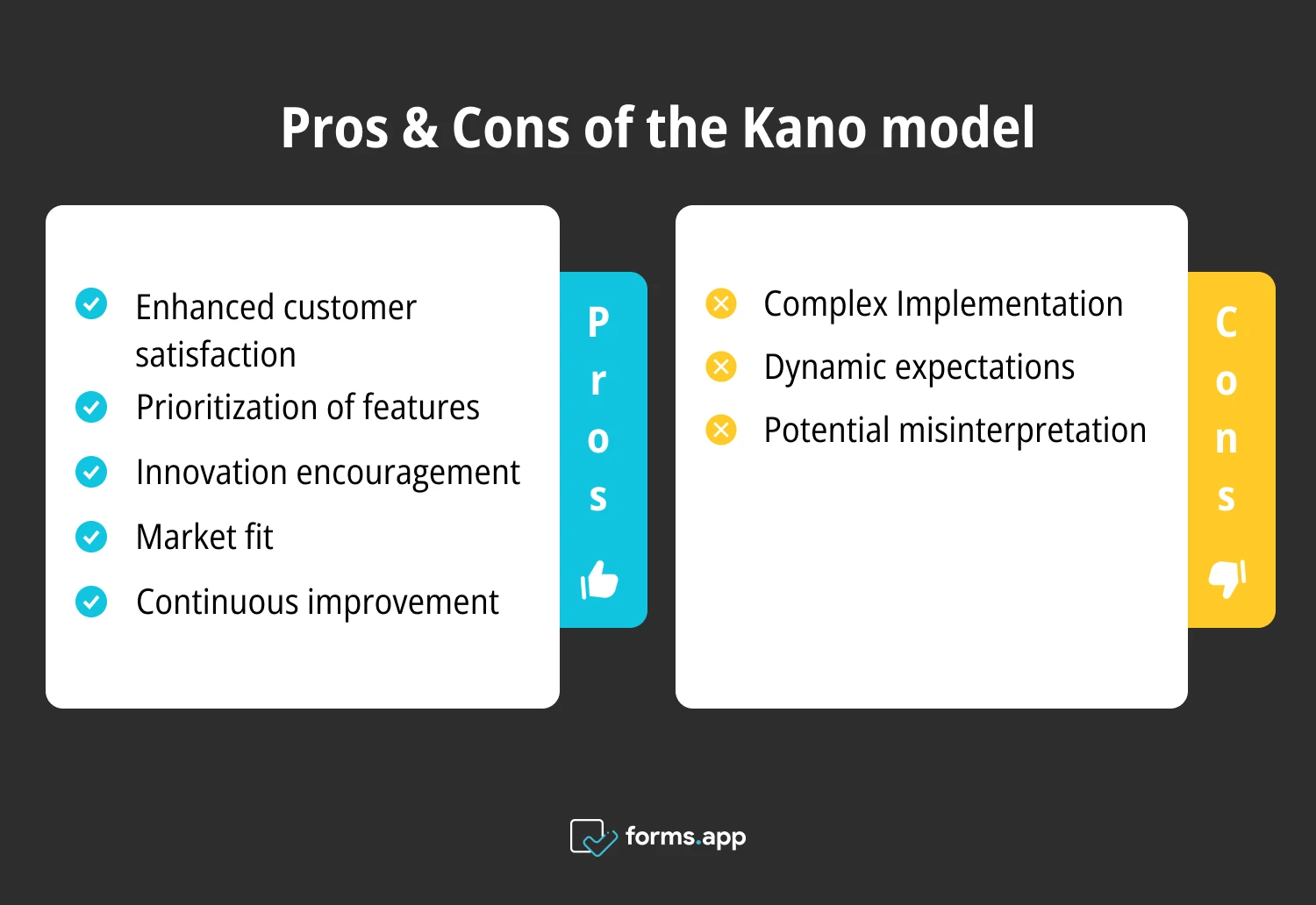
Advantages and disadvantages using the Kano model
Pros:
- Enhanced customer satisfaction: The Kano Model identifies features that meet and exceed customer expectations, leading to higher satisfaction and loyalty. Businesses can create a more compelling and rewarding customer experience by addressing basic and exciting needs.
- Prioritization of features: The Kano Model helps prioritize features based on their impact on customer satisfaction. This ensures efficient resource allocation, focusing efforts on the most critical aspects of product development that will provide the greatest value to customers.
- Innovation encouragement: By highlighting excitement needs, the Kano Model encourages incorporating innovative features that delight customers. This can differentiate products in the market, fostering creativity and driving ongoing innovation within the business.
- Market fit: The Kano Model aligns products with customer preferences, ensuring a better market fit. Understanding what customers value most helps businesses create offerings that resonate with their target audience, leading to increased market acceptance and competitive advantage.
- Continuous improvement: The Kano Model provides a framework for continuous improvement by regularly assessing and adapting to evolving customer needs. This process ensures that products and services remain relevant and competitive in a changing market landscape.
Cons:
- Complex Implementation: Implementing the Kano Model requires detailed surveys and thorough analysis, which can be resource-intensive and complex. Small businesses or those with limited resources may struggle to gather accurate data and conduct effective evaluations.
- Dynamic expectations: Customer expectations change over time, necessitating continuous reassessment and adaptation of the Kano Model. This dynamic nature requires businesses to stay vigilant and proactive, constantly updating their understanding of customer needs.
- Potential misinterpretation: Misinterpreting customer needs during analysis can lead to incorrect prioritization and misguided development efforts. Ensuring accurate data collection and robust analysis methods is crucial to avoid these pitfalls and make informed decisions.
Frequently asked questions about the Kano model
The five requirements of the Kano Model are:
- Identify target customer segments
- List potential product or service features
- Design a Kano questionnaire with functional and dysfunctional questions
- Conduct the survey with a representative sample of customers and
- Analyze the data to categorize features into basic, performance, excitement, indifferent, and reverse needs.
Kano's five types of quality are:
- Basic Needs - essential features expected by customers
- Performance Needs - features that directly impact satisfaction
- Excitement Needs - unexpected features that delight customers
- Indifferent Needs - features that neither increase nor decrease satisfaction and
- Reverse Needs - features that can cause dissatisfaction if present.
To analyze Kano results:
- Collect survey data from customers,
- Categorize each feature based on customer responses to functional and dysfunctional questions,
- Use the Kano evaluation table to determine the type of each feature (basic, performance, excitement, indifferent, reverse),
- Prioritize features based on their impact on customer satisfaction and
- Adjust product development accordingly.
The Kano Model is applied in product development and improvement. It helps identify and prioritize features based on their impact on customer satisfaction. Businesses use it to enhance basic needs, optimize performance, and introduce exciting features. This leads to higher customer satisfaction, better resource allocation, and a competitive edge in the market.
Key points to take away
In conclusion, the Kano model theory is a powerful tool for transforming your business by understanding your customers' wants. Your business can create products that meet and exceed expectations by prioritizing features that truly matter. Embrace the Kano Model to continuously adapt and evolve, ensuring your offerings remain relevant and delight your customers in a dynamic market.
Fatih is a content writer at forms.app and a translator specializing in many text domains, including medical, legal, and technical. He loves studying foreign languages. Fatih especially likes to create content about program management, organizational models, and planning tools.
